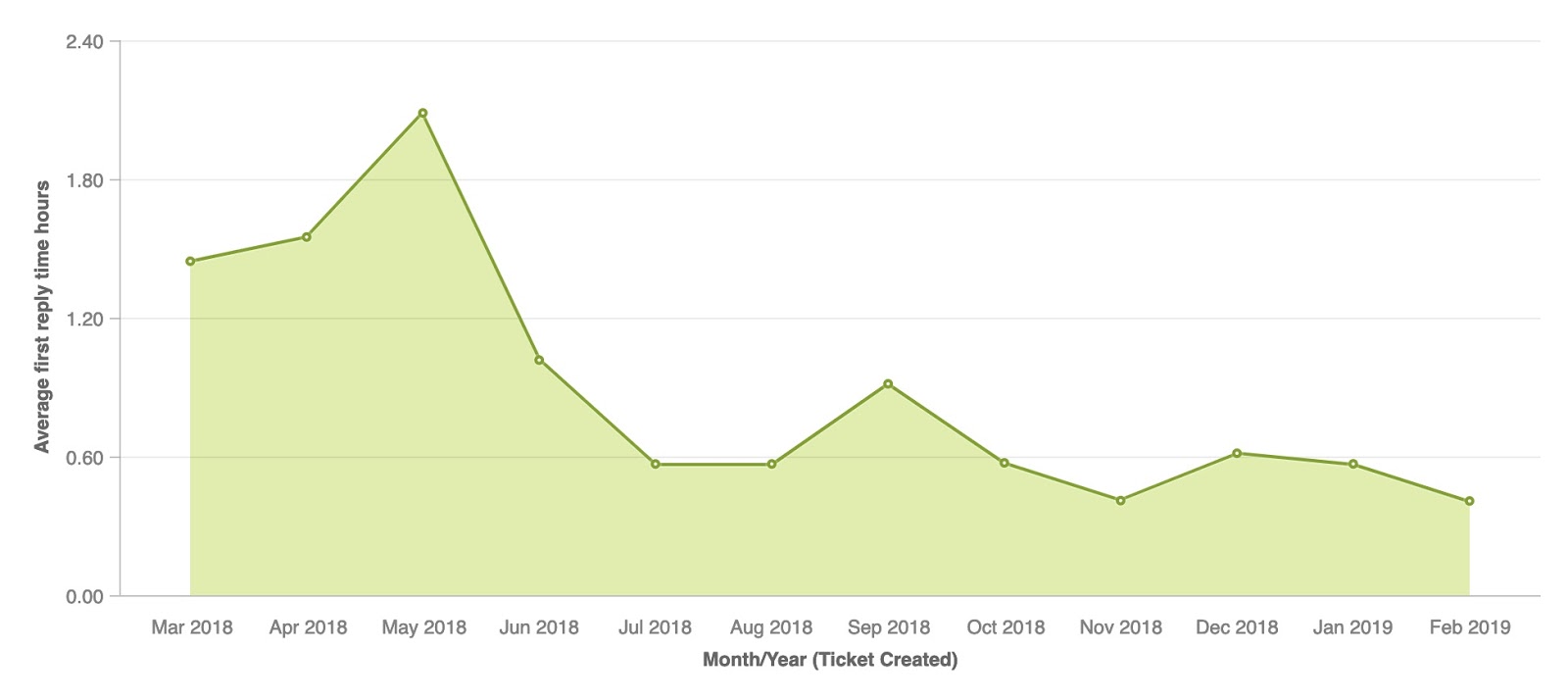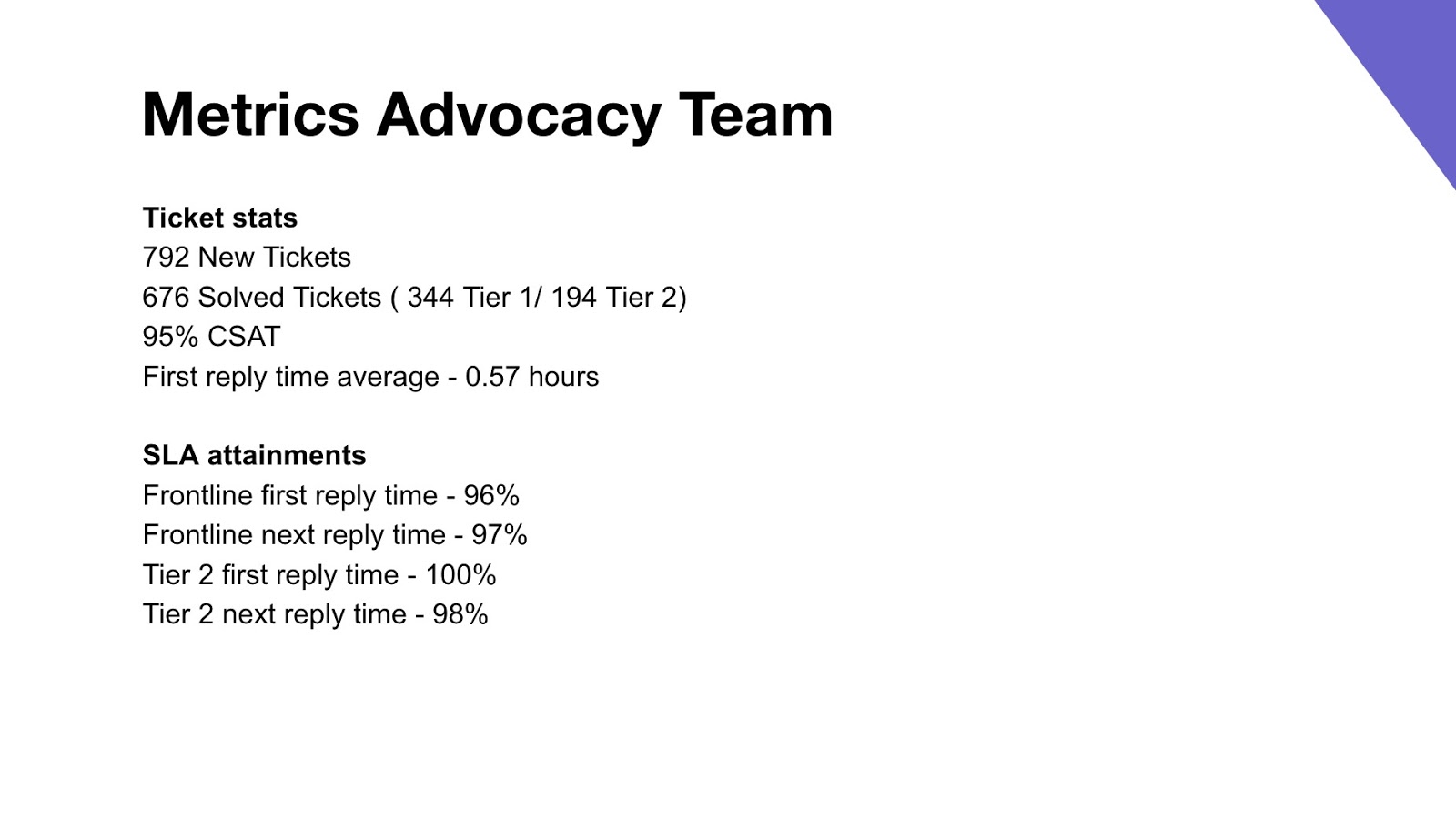When I started to build the success team at ChartMogul over three and a half years ago, I knew that I wanted to build a distributed team from the get-go. We only had an office in Germany at the time. This often required us to work late into the night to serve our customers in the U.S. and beyond. Because our customer success team strives to be responsive, it was clear that we needed a presence on multiple continents. I needed to determine how to effectively evaluate our performance as a distributed team. These were some of the questions I was faced with:
- What key metrics should we track?
- What goals targets should we aim for?
- How can I motivate and communicate metrics to the team across time zones?
Having the right key metrics in place and hitting or exceeding your targets creates a purpose-driven customer success culture and energizes your team. Your customers will thank you for it.
Performance indicators to support your team’s mission
When weeding through various blog post of SaaS and customer success thought leaders, I encountered numerous opinions about which metrics are most important to track and why. Every author made a good case for why a particular metric was important to their operation. It occurred to me that the best way to make the metrics we adopt relevant to our business was to relate them to our success team’s mission. Each metric should empower our team to deliver on our mission statement. And the metrics used should adapt over time with our team and our customers. Today our team mission reads:
The Success team at ChartMogul aims to serve our customers throughout their entire lifecycle to get value out of our product. We do this by helping them to understand, trust, and use their data to make business decisions.
Metrics should be role specific
Today, our success team is split into three parts:
- Customer advocacy (frontline and tier 2 customer support)
- Solutions (success ops and enablement, technical documentation, and onboarding)
- Success management (key account retention, expansion, and education)
Reflecting on our mission statement, we choose to measure the quality and speed of serving our customers (first reply time, next reply time, CSAT), product usage metrics (active users / monthly & weekly), and the value our customers realized, or did not realize with our product (NPS and MRR lost by churn reason).
Next, we mapped out which of these were team level goals and which related to specific parts of the team. This helped make it clear who owned what and how specific goals related to one another.
We came up with something like this:

Establishing realistic goals and targets
Once we had the right reports configured to track these metrics, we had a look at the historic averages to define targets.
Here’s an example of how our advocacy frontline team set and attained an aspirational target for first reply time: In the early summer of 2018, we split our advocacy team into two teams: frontline and tier 2. Our frontline team covered 14-hours Monday to Friday from 9 am to 11 pm CET. Our historic first reply time average during business hours oscillated between 1.4 and 2.2 hours.
We decided to set an SLA (Service Level Agreement) target of one (1) hour or less. In the month before we started, May 2018, our average first reply time during business hours was 2.09 hours. The following month, we nearly hit our target by achieving a 1.02 hours average first reply time. We reviewed what was still slowing us down and were able to get our response time to just 0.57 hours in July 2018. Our average first reply time has been under 1 hour ever since. Our SLA attainment is consistently at 95% or above.

What had seemed an aspirational goal just a year ago has become our new standard. Our customers have noticed too and comment about it in our NPS and CSAT surveys frequently:
As always, Sarah was super informative and her responses were extremely prompt!
From targets to team process
To take this one step further, we then wrote an SLA policy for our advocacy team that defined our targets for our first reply time and next reply time for both our frontline and tier 2 advocates. Considering the size of our team (just 7), we were excited that we managed to consistently attain such a performance. Consistently hitting this target created a new standard of excellence resulting in an improved customer experience.
In addition to setting targets for the primary metrics we were tracking, we also formulate MBO (management by objective) goals on a monthly and quarterly basis. MBOs help us grow organizationally as a team as we continue to achieve our high response and SLA standards. There are ongoing internal requirements to administer our tooling, develop, and evolve processes and to maintain our customer-facing help center. We use Trello to create a backlog of projects and to map the prioritized MBOs for each team.
Evaluating and improving performance
In order to evaluate our progress, we hold a monthly success roundup to look at the attainment of metrics and MBOs of the past month and to define next month’s goals. The targets and MBOs of our success management team are set on a quarterly basis as the initiatives of this team align better with longer time frames. We still evaluate the progress of these on a monthly basis in the monthly success roundup. Coordinating across time zones requires some flexibility — but we always like to connect and learn from one another.
Each month, several team members take responsibility for presenting the month’s highlights and learnings. Reviewing this as a team helps us remain goal-oriented, celebrate victories, and share insights.

We share our NPS survey results, churn reasons, and active users per month/week with the rest of the company during our monthly town hall. This helps us demonstrate where other parts of the organization can influence customer success metrics.
Choosing the right metrics relevant to your current stage as a business, setting ambitious targets and goals, and regularly evaluating your progress will enable you to run a high performance distributed success team. If you establish a standard of excellence, your team will be proud and your customers will rave.
